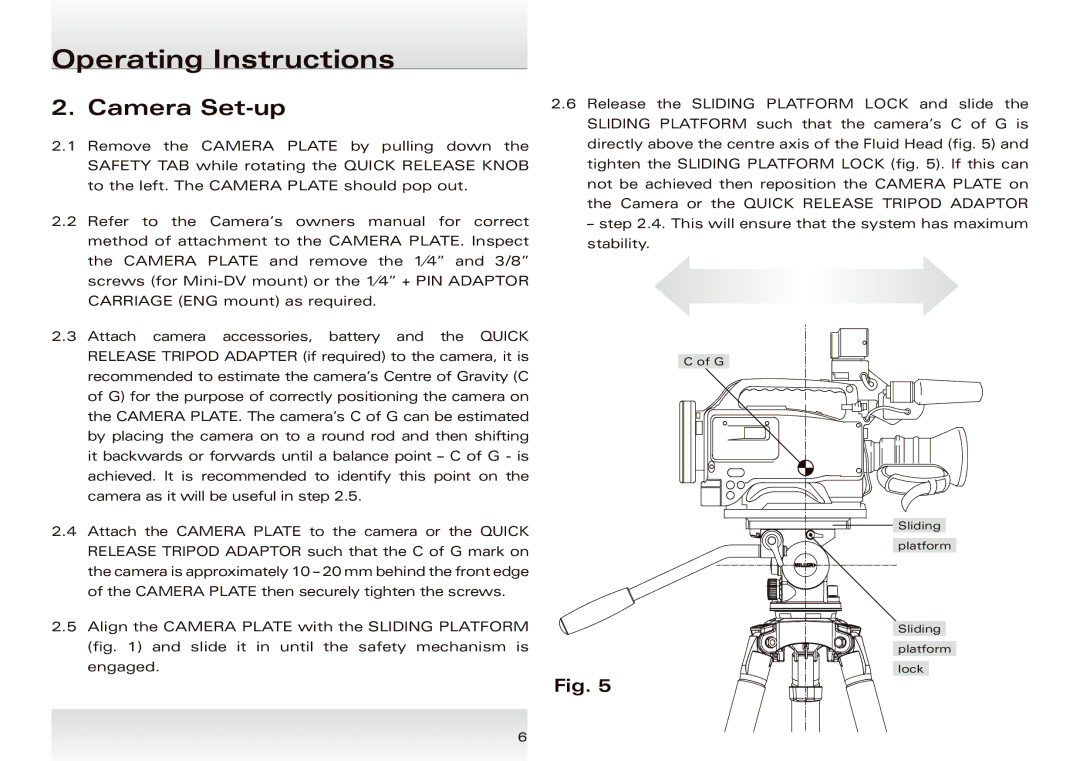
Operating Instructions
2. Camera Set-up
2.1Remove the CAMERA PLATE by pulling down the SAFETY TAB while rotating the QUICK RELEASE KNOB to the left. The CAMERA PLATE should pop out.
2.2Refer to the Camera’s owners manual for correct method of attachment to the CAMERA PLATE. Inspect the CAMERA PLATE and remove the 1⁄4” and 3/8” screws (for
2.3Attach camera accessories, battery and the QUICK RELEASE TRIPOD ADAPTER (if required) to the camera, it is recommended to estimate the camera’s Centre of Gravity (C of G) for the purpose of correctly positioning the camera on the CAMERA PLATE. The camera’s C of G can be estimated by placing the camera on to a round rod and then shifting it backwards or forwards until a balance point – C of G - is achieved. It is recommended to identify this point on the camera as it will be useful in step 2.5.
2.4Attach the CAMERA PLATE to the camera or the QUICK RELEASE TRIPOD ADAPTOR such that the C of G mark on the camera is approximately 10 – 20 mm behind the front edge of the CAMERA PLATE then securely tighten the screws.
2.5Align the CAMERA PLATE with the SLIDING PLATFORM (fig. 1) and slide it in until the safety mechanism is engaged.
2.6Release the SLIDING PLATFORM LOCK and slide the SLIDING PLATFORM such that the camera’s C of G is directly above the centre axis of the Fluid Head (fig. 5) and tighten the SLIDING PLATFORM LOCK (fig. 5). If this can not be achieved then reposition the CAMERA PLATE on the Camera or the QUICK RELEASE TRIPOD ADAPTOR
– step 2.4. This will ensure that the system has maximum stability.
C of G
Sliding platform
Sliding platform lock
Fig. 5
6
